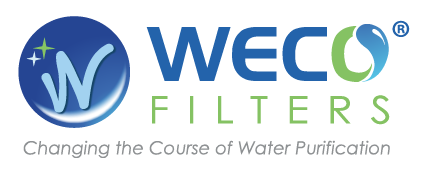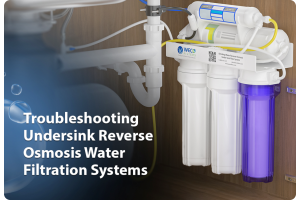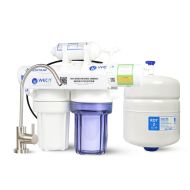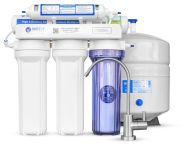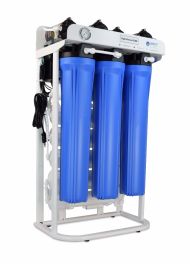Substances Reverse Osmosis Technology Struggles to Remove

Substances Reverse Osmosis Technology Struggles to Remove
Nidia K Trejo

Reverse osmosis (RO) was first commercialized at UCLA in the 1960s. Now it is used throughout the world at the advanced, end stages of water treatment. The quality of water output from these RO systems is high. This makes the water safe enough for people to drink and can be pure enough for use in industrial processes.
RO effectively removes dissolved salts that can contribute to water hardness as well as metal ions like lead and mercury. The pore size of RO filters enable proper removal of protozoa, bacteria, and viruses from water. The pores are an order of magnitude smaller than nanofilters and three orders of magnitude smaller than microfilters (CDC, 2008). It is great at targeting common contaminants in water.
However, there are some contaminants that RO is not so great at treating. Volatile organic compounds (VOCs) are one of them. They are substances that can easily become gases. They have high vapor pressures and low boiling points. Environmental scientists and engineers at the University of Wollongong in Australia found that RO technology can remove hydrophilic, water loving VOCs better than hydrophobic, water-hating VOCs from groundwater. High rejection of hydrophilic, carbon tetrachloride and toluene was achieved. Low rejection results were observed with hydrophobic VOCs like benzene and dichloromethane (Altalyan et al, 2016).
Another type of contaminant that RO struggles to remove effectively are pesticides. They are widely used in agricultural applications and designed to persist. Reverse osmosis experts at the CSIR-Central Salt and Marine Chemicals Research Institute in India compared removal of two common phenyl urea pesticides, diuron and isoproturon. Their results indicate that RO filter membrane became more hydrophilic with diuron, which modified the membrane permeability. Isoproturon made the membrane more hydrophobic, which led to higher rejection results (Mehta et al, 2015).
Results from the two studies show that RO is not optimal against these contaminants. They give contradictory conclusions on the play of hydrophilic-hydrophobic characteristics. RO just doesn’t work for treating VOCs or pesticides in a consistent trend.
Other water treatment technologies outperform RO for the removal of VOCs and pesticides. One example is ultraviolet irradiation. Exposure to an electromagnetic radiation source overtime decomposes the chemical structure of the substances into smaller, often less toxic metabolites. Another technology that outperforms RO for these type of contaminants is activated carbon. It works by capturing the contaminants by physical adsorption as a cost effective approach.
The performance of water technologies really depends on the site-specific contaminants and overall conditions of the water prior to treatment. There is no doubt that the water technologies can perform. The challenge is in considering the complexity of the water that needs treatment.
Nidia K Trejo is a sustainable innovation specialist based in Los Angeles, California. She holds a a master’s degree in fibre science from Cornell University and worked as a graduate research assistant developing metal oxide nanomembranes for potential wastewater treatment applications. Nidia works as a freelance writer for Water Engineering Corporation.
Sources
- Altalyan, Hamad N., Jones, B., Bradd, J., Nghiem, L. D., Alyazichi, Y. M. “Removal of volatile organic compounds (VOCs) from groundwater by reverse osmosis and nanofiltration.” Journal of Water Process Engineering, Vol. 9, 2016, pp. 9-21. https://doi.org/10.1016/j.jwpe.2015.11.010.
- Drinking Water Treatment Technologies for Household Use. 2008. https://www.cdc.gov/healthywater/pdf/drinking/Household_Water_Treatment.pdf
- Mehta, Romil, Brahmbhatt, H., Saha, N.K., Bhattacharya, A. “Removal of substituted phenyl urea pesticides by reverse osmosis membranes: Laboratory scale study for field water application.” Desalination, Vol. 358, 2015, pp 69-75. https://doi.org/10.1016/j.desal.2014.12.019.
